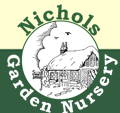Lettuce
Filter by:
Lettuce Suppliers
Gardener's Supply is proud to be employee-owned. We are gardeners ourselves and have earned our customers' trust by providing high-quality products, expert information, and friendly, personalized service.
We understand the products we sell because we use them in our own gardens. Regular product training sessions and a gardening certification program for our staff help us provide the best service and support in the business.
Lettuce Pests & Diseases
- Texas A&M - Lettuce | Texas Plant Disease Handbook
- Penn State - Lettuce | Diseases and Pests, Description, Uses, Propagation
- University of California Agriculture and Natural Resources - Lettuce: Heading to Harvest: Pests and their Damage (Central Valley)—UC IPM
- North Carolina State University - Pests of Lettuce | NC State Extension Publications
- University of California Agriculture and Natural Resources - Managing Pests in Gardens: Vegetables: Lettuce
Lettuce has been grown on farms and in gardens throughout recorded history, even being part of ancient Egyptian tomb reliefs, and recorded as being grown throughout the ancient world. There are hundreds of varieties of lettuce with seven distinct types. Four or five of these varieties are most commonly found in gardens, in two main groups: Headed lettuce and leafy lettuce. Bauer, Monte Carlo, and Rex are a few varieties.

Lettuce has been grown on farms and in gardens throughout recorded history, even being part of ancient Egyptian tomb reliefs, and recorded as being grown throughout the ancient world. There are hundreds of varieties of lettuce with seven distinct types. Four or five of these varieties are most commonly found in gardens, in two main groups: Headed lettuce and leafy lettuce. Bauer, Monte Carlo, and Rex are a few varieties.
Loose-leaf lettuce comes in both red and green leaf types. They can bolt in very warm weather. Ruby and Tropicana are both heat-tolerant types, resistant to bolting. One nice thing about leaf lettuce, is that individual lettuce leaves can be harvested multiple times when young or near full maturity, which extends the harvest. They are easier to grow than the headed varieties of lettuce.
Summer Crisp, or Batavia Lettuce, is somewhat between the leafy and headed kinds of lettuce. These are growing in popularity, especially for growing in summer. They are fairly heat tolerant, and the leaves can be picked while maturing like loose leaf lettuces, and they also have both green and red varieties. These grow and mature from a leafy-looking plant into a more tightly packed head at full maturity. Interestingly, Iceberg lettuce was originally bred from Batavia lettuce.
Iceberg or Crisphead lettuce may be the most recognizable type of headed lettuce for many people. They grow into a crisp ball of layers of leaves, tightly wrapped together into a cabbage-like head. Sweet and mild tasting, they last longer in the fridge than other kinds of lettuce. Summer Crisp is a good heat tolerant type of Iceberg lettuce.
Butterhead lettuce, including the Bibb and Boston varieties, is another common kind of headed lettuce. They are somewhat looser than Iceberg lettuces, and have buttery and sweet tasting tender leaves. Butterhead Speckles is one of the better heat-tolerant types.
Romaine lettuce is a tall, loose but sturdy variety of heading lettuce. Little Gem and Parris Island are two heat tolerant types of Romaine. It is a bit bitter compared to other lettuce types, but still has a nice, mild flavor. It is best known as the main ingredient in Caesar Salad.
A few other varieties of lettuce can be garden grown for specific purposes. Celtuce, or Stem lettuce, is harvested for the thick stems and not the leaves. This is most commonly used in Chinese and other Asian recipes, and is often called Chinese lettuce. Oilseed lettuce is grown specifically for the seeds, which are larger than other lettuce seeds, and are used for producing lettuce seed oil.
Crisphead lettuce is a particularly good source of Folate (vitamin B9), but all lettuce is a pretty good source of both Folate and Vitamin K. Romaine lettuce is higher in general nutrition than Crisphead, also being a good source of Vitamin A, a good antioxidant. Butterhead is high in iron and Vitamin A.
- Lettuce (Lactuca sativa)https://gardensavvy.com/garden-suppliers/lettuce/
- Annual
- Full sun to partial shade
- Plant after the last frost
- Soil should be slightly acidic (6.0pH to 6.5pH)
- Fertile soil, well-draining
- Seeds starting (transplant)
1/2″ deep, in pots
Transplant to garden after last frost
Plant 8 inches apart
Rows 18″ apart
- Seeds starting (direct in garden)
1/2″ deep
Start 2 inches apart, thin to 8 inches
Rows 18 inches apart
- Climate Zones 2a-11b
Garden lettuce can be started indoors and transplanted to the garden, or sown directly in the garden. In colder climates it may be best to start some indoors, and transplant them after the last frost. This can be combined with directly seeded plants elsewhere in the garden, to extend the growing season. It’s important for the final plants to be at least 8 inches apart. The garden soil should be rich and well drained. Temperatures should be cool, ideally 60 °F to 65 °F. Lettuce can do well with cooler temperatures and can tolerate a few light frosts. All can tolerate occasional temperatures up to about 70 °F. Floating row covers can be used when frost occurs. Lettuce can be grown in spring or fall, but non heat-tolerant types will bolt in the high heat of summer.
Lettuce is also perfect for container gardening. Pots should be at least 6 inches deep, which is fairly shallow compared to some more deeply rooted plants. They should be pots that drain (a hole, or holes in the bottom). Use good quality potting soil, and place them to make sure that they get at least six hours of sunlight a day. You can either plant them directly in the final container, or start seedlings and transplant them into a larger pot. Water potted lettuce frequently, they do need a bit more water than lettuce grown in the ground. Once growing well, if moving them outdoors, harden the plants by leaving them outside for a few hours a day. Like garden lettuce, it’s best if the temperature is in the low 60’s. These can also be grown indoors, but ensure that they get about 6 hours of sunlight a day.
Lettuce does well planted next to several other crops. Root vegetables like beets, carrots and onions do well planted with lettuce, because these grow deep, and lettuce has shallow roots and grows up and out, so they don’t compete for space. Other crops like melons or eggplant will mature over a much longer period, so spring planted lettuce will be harvested just as these are starting to grow out. Strawberries, cucumbers, and radishes can share nutrients and don’t interfere with growth. Some crops also help the lettuce with pests. Turnips and garlic planted nearby will help to repel aphids.
Aphids and other pests like cabbage loopers, cutworms, or slugs and snails can cause some issues, but there are strategies to address this. As already mentioned, some companion plants can help with pests. A good plan to fight aphids, which has worked for me pretty well, is to grow a lettuce row between two rows of turnips, and then outside the turnip rows, grow nasturtiums. Nasturtiums attract aphids, so if they are an issue in your garden, if planted carefully, this can keep any aphids away from lettuce and other plants when they would otherwise be problematic. Neem oil can also be an effective organic treatment that helps to control aphids, and diatomaceous earth can be scattered to control many other ground based insects, including slugs and snails.
Leaf lettuce can be harvested any time during the season, individually as microgreens, or individual leaves of lettuce as they continue to grow. Head lettuce will need to be harvested when fully mature, though it’s a good idea to pull off any browning exterior leaves, as they approach harvest time. For these, just cut the plant by the stem.
Harvesting lettuce seeds can be a great way to keep things going in your garden from year to year. As an important note, only harvest seeds from open pollinated or heirloom varieties, as hybrids don’t breed true to type. Also, if you plan to harvest seeds, don’t plant different varieties of lettuce too close together, since they can pollinate each other, and that will lead to unexpected and unpredictable hybrids. An easy way to do the harvest is to leave a few plants to go to bolt in the summer, then wait until the seed heads are ready, and cut the flower stalk off near the base. Put it inside a paper bag, and hold it top down by the stem, and shake it thoroughly. This keeps the seeds from flying everywhere. Once you have gotten most of the seeds, discard the stalk and carefully pour the gathered seeds onto a large platter, or a tray. There will be both seeds and chaff. Blow the chaff off, and sort the dark black seeds carefully and store for the following year!









